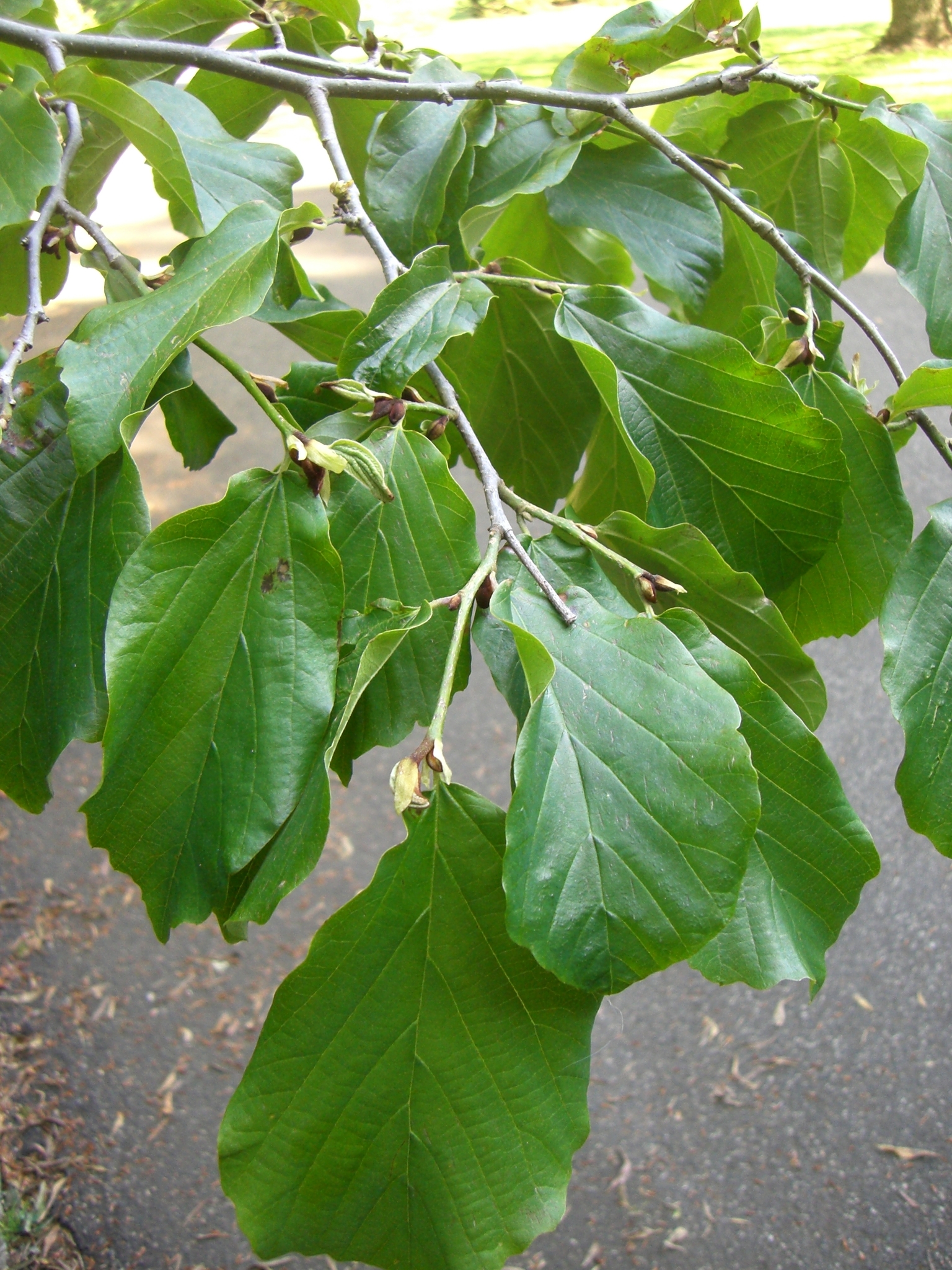
Deciduous tree to 10 m tall. Bark grey. Leaves oval to obovate, about 10 cm long, 7-8 cm wide, hairless, tip blunt; margin wavy and with a few smooth indentations above the middle; veins 5-7, joining at the base; colouring red, orange and yellow in autumn. Leaf stalk 5-8 mm long, downy. Flowers in a flat head surrounded by 6 brown, hairy, scales. Sepals 5-7. Petals 0. Stamens numerous, bright red; spring. Fruit a capsule with 2 shiny, ellipsoidal seeds.
N Iran
Grows naturally in the foothills of the Caucasus and Elburz mountains.
Bark flaking to produce trunks similar in appearance to those of the plane tree; sparse star-shaped hairs on undersurface of leaves; stamens red.
SA: Stirling (Beechwood Heritage Garden, Snows Rd). ACT: NE end of Telopea Park. NSW: Albury ( Albury Botanic Gardens ); Leura ('Everglades'); Wellington (Park). VIC: Bulla ('Glenara', one-time home of Alister Clarke, famed for, amongst other horticultural activities, his rose breeding. The specimen tree in the Rose Garden was first collected as a herbarium specimen in 1941); Burnley (University of Melbourne, Burnley Campus; Dandenongs ('Pirianda'); Emerald (Nobelius Heritage Park, 7 m in 1983); Heidelberg (Heide Gardens and Sculpture Park); Mt Macedon ('Forest Glades' c.12 m in 1984); Melbourne (Royal Botanic Gardens Victoria (Melbourne Gardens)); Parkville (Thr University of Melbourne, Macfarlane Court).
Source: (1997). Hamamelidaceae. In: . Horticultural Flora of South-eastern Australia. Volume 2. Flowering plants. Dicotyledons. Part 1. The identification of garden and cultivated plants. University of New South Wales Press.
